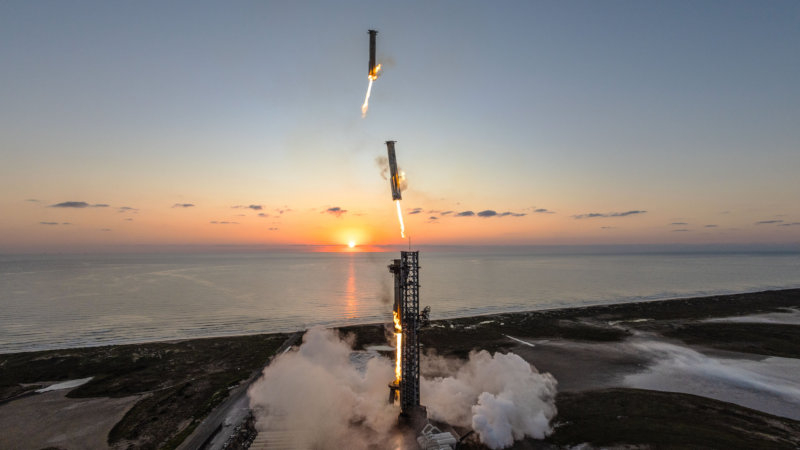Last Sunday, SpaceX carried out the fifth test launch of the giant Starship rocket. About seven minutes after liftoff, Super Heavy’s first stage returned to the launch pad, where it was caught by “chopsticks” on the Mechazilla launch tower. The same fate awaits the top step, Elon Musk said.

Image source: x.com/SpaceX
SpaceX intends to do the same operation with the upper stage of the Starship spacecraft, which is 50 m high, and this will happen in the coming months. “I hope that at the beginning of next year we will catch the ship,” the head of the company, Elon Musk, wrote on social network X.
The fully reusable Starship rocket, which has a total height of 122 m, is being developed to carry people and cargo to the Moon and Mars, as well as other space missions. The project is developing successfully – the last two test flights of the ship, on June 6 and October 13, according to SpaceX, were completed successfully.
So it’s hardly a surprise that the company intends to push the envelope by ensuring Starship’s safe return on one or more test flights. But landing using “chopsticks” will not accompany all missions of the ship. When sent to the Moon and Mars, a vertical landing scheme using landing legs will be required.
Starship will also fly into Earth orbit, for example, to expand the Starlink constellation of communications satellites and refuel other Starships that will be assigned to long-distance missions. Launcher landings make sense for fast and efficient flights to and from Earth orbit.